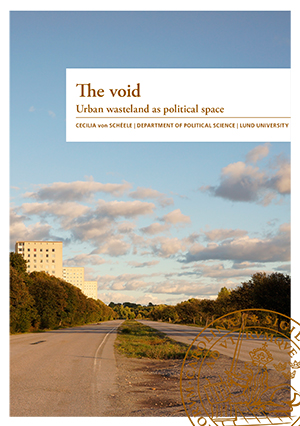How is it that the left over, seemingly undefined, kinds of urban space where people walk their dogs, do art or find shelter for the night, are articulated and categorised as voids, gaps, or no-spaces? They are often anything but urban voids, in a literal sense, as they are not empty or deserted. Through a deconstruction-inspired analysis, thinking with the Derridean notion of an undecidable, the author investigates the becoming of the urban void as a deviance, as another kind of space. The thesis shows, in the form of a montage and with illustrations from Athens, Berlin, Brasília, Malmö and Stockholm, the processes by which the most mundane space is made strange. It not only writes the urban void into politically relevant space but represents it in a way that makes it obvious as a politically relevant space. It brings the ‘no-spaces’ out of an (assumed) obscurity, yet at the same time de-mystifies the (same) fascinating places, in hope of a less polarised and more nuanced discourse on the urban wastelands. Only then can the existence of the urban void as a category of left over space be questioned, and the thesis concludes by opening up for future inquiry about what kind of city could become from a point of view where the urban void is just another kind of space.


